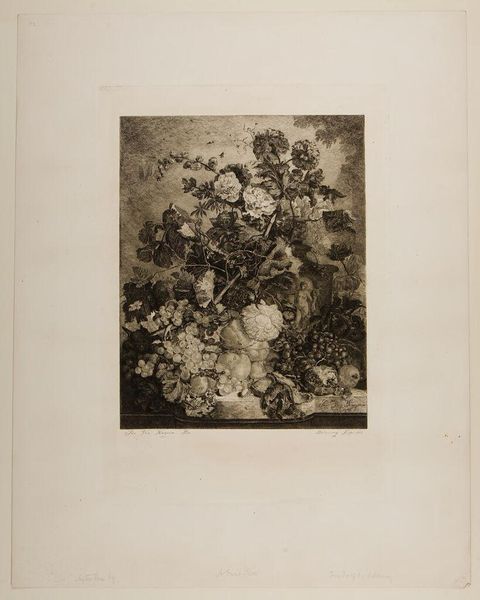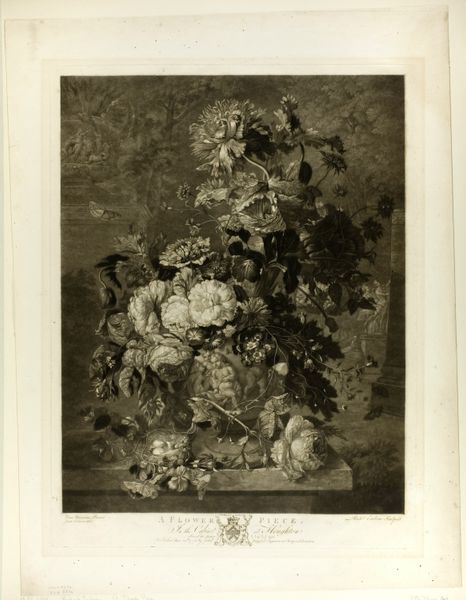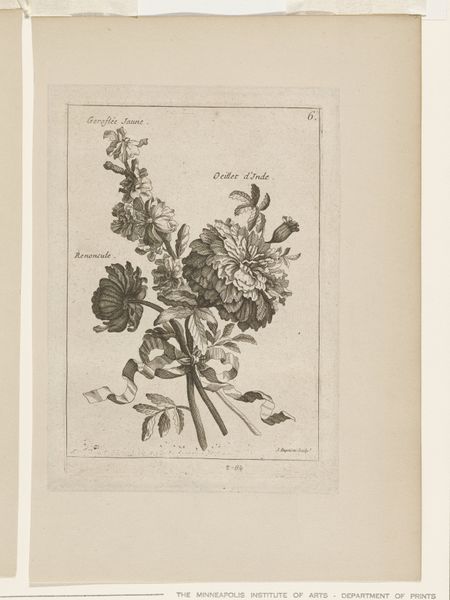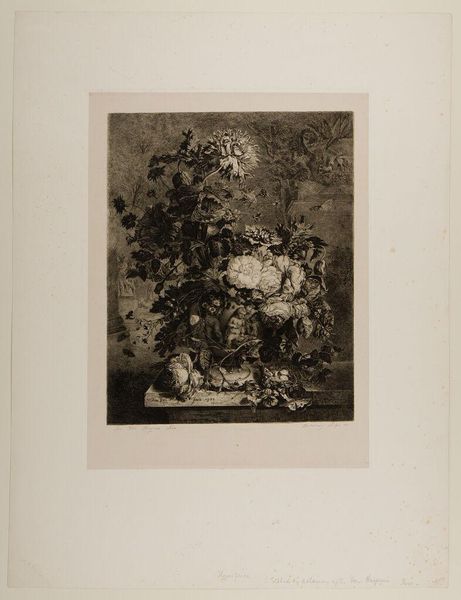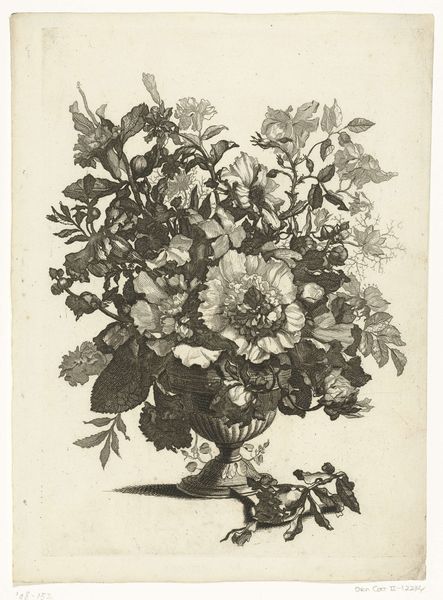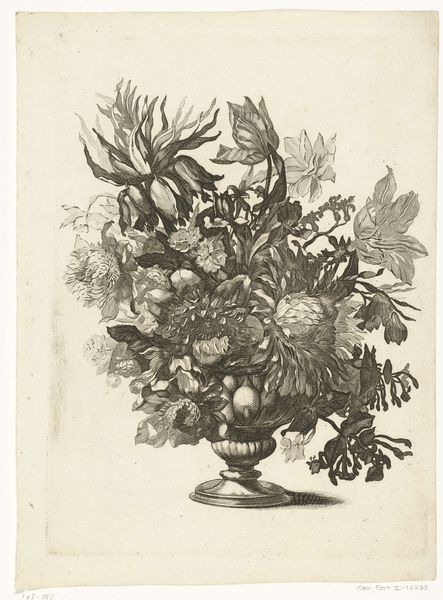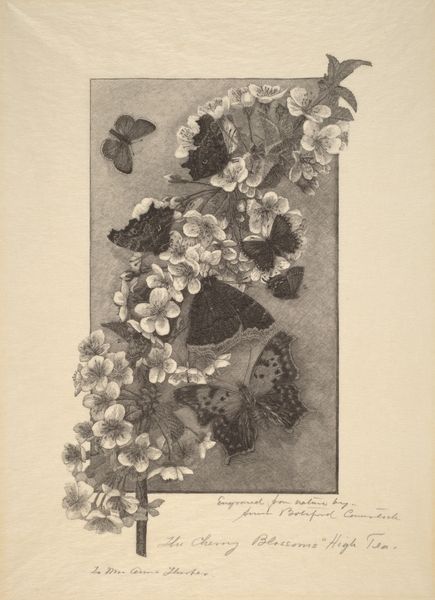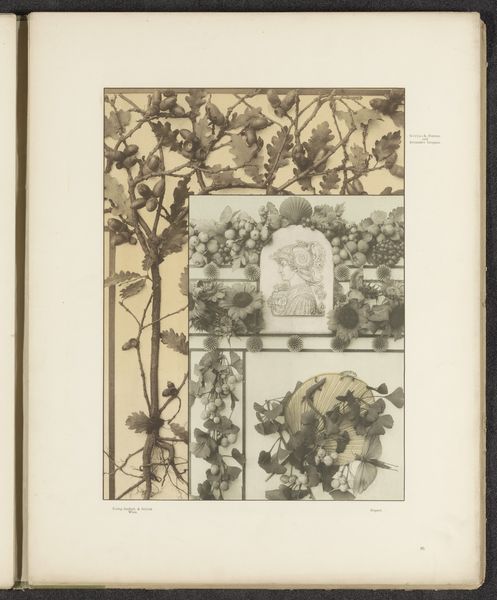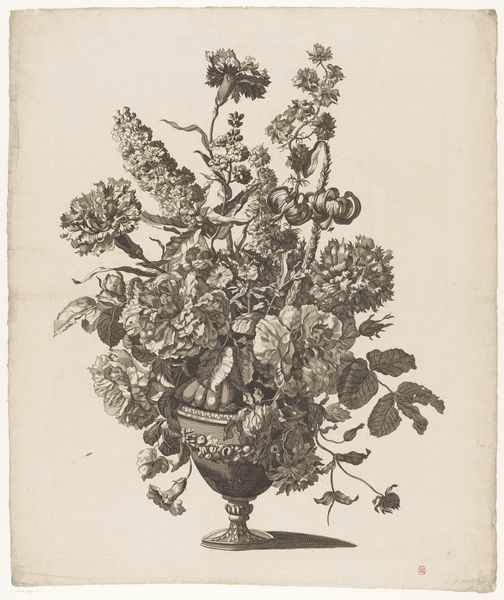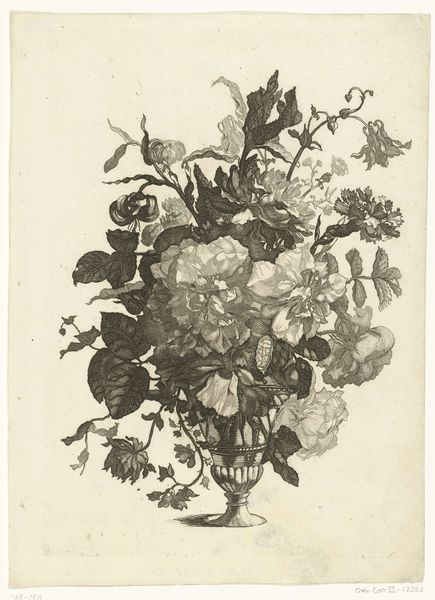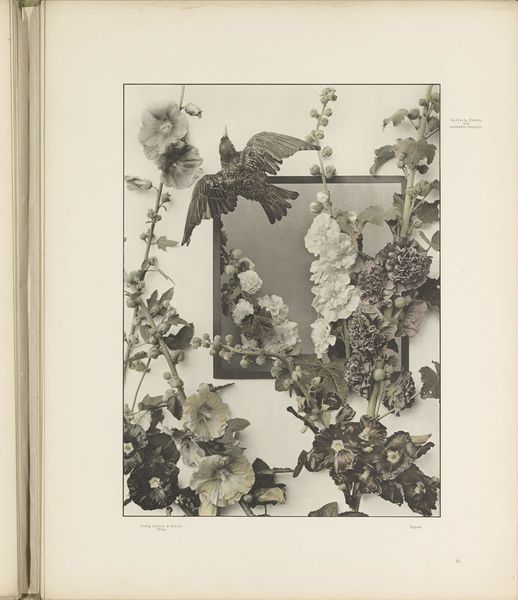
Dimensions: 504 × 387 mm (image); 558 × 413 mm (plate); 652 × 510 mm (sheet)
Copyright: Public Domain
Richard Earlom created this print, "A Fruit Piece," sometime around the late 18th century, using a technique called mezzotint. Mezzotint is all about creating tone through texture. The plate is roughened, then smoothed in areas to produce lighter shades. This creates a soft, velvety effect that’s quite different from the sharp lines of an engraving. Look closely, and you’ll notice how Earlom masterfully simulates the textures of fruit and foliage through gradations of light and shadow. The process required immense skill. It was laborious work, involving the careful manipulation of tools to achieve the desired tonal range. In Earlom’s time, printmaking was bound up with wider social issues of labor and consumption. Prints like these were not just art objects, but commodities, allowing collectors to acquire versions of popular paintings. By understanding the means of production, we appreciate the artistry involved, and the intersection of craft, commerce, and artistic expression in this image.
Comments
No comments
Be the first to comment and join the conversation on the ultimate creative platform.
